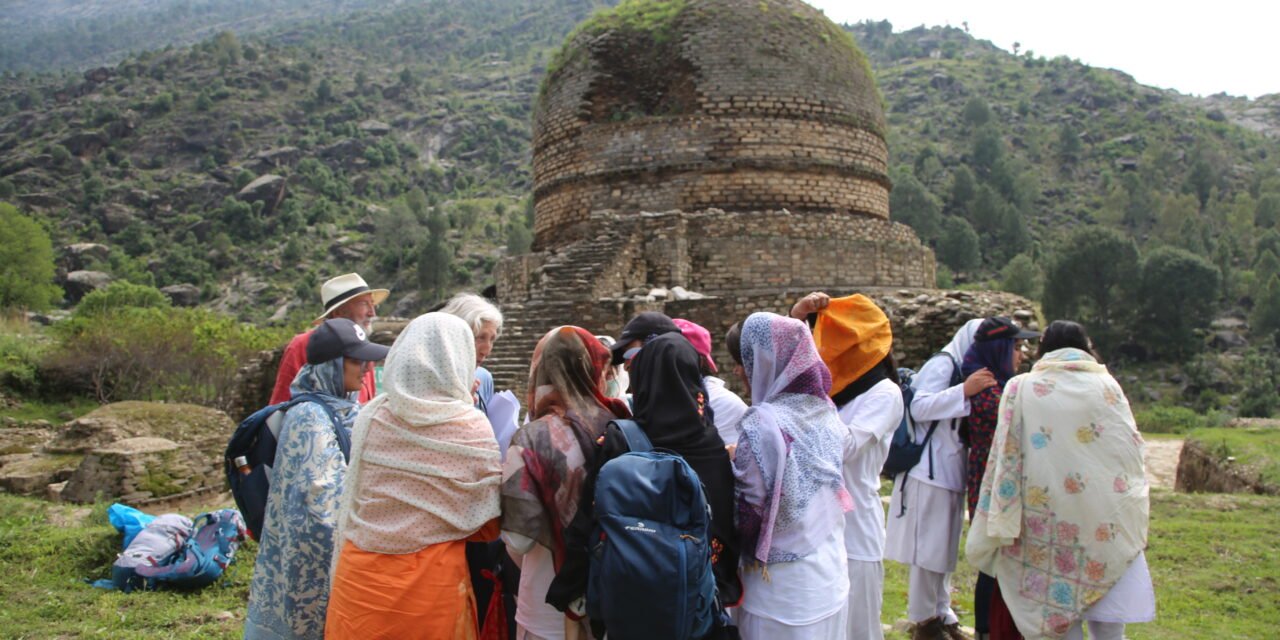By Arshad Jaan
SWAT: Nestled in the heart of Pakistan, the Swat Valley, with its rich tapestry of Gandharan cultural heritage, remains an underappreciated treasure. Unlike other global regions that thrive on the influx of national and international tourists, Swat Valley has yet to harness its full potential as a major tourism hub. As the world continues to explore new destinations, Swat stands poised to become a jewel in the crown of cultural tourism, waiting to share its ancient secrets and breathtaking landscapes with travelers from around the globe.
Many countries earn handsome foreign exchange from their cultural heritage, but due to the neglect of local communities and lack of government attention, Swat’s cultural and religious tourism has not yet flourished.
Swat Valley is renowned for its exceptional natural beauty and religious tourism, being a significant site for Buddhists and other civilizations. The valley’s Buddhist shrines and stupas showcase its rich cultural heritage. This region, often referred to as the second holy land for Buddhists, attracts numerous Buddhist pilgrims from Tibet and South Asia.
Alisa, the Deputy Director of the Italian Archaeological Mission in Pakistan, who has been working in Swat for the past decade, emphasized the valley’s importance. She mentioned that Swat is home to a Buddhist temple, a Hindu fort, and a mosque in the Udigram area, highlighting the region’s diverse religious history. Alisa praised the provincial government’s efforts to preserve these archaeological sites, noting that they are not only cultural treasures for the local people but also potential sources of income. “If someone has a passion for history, they should visit Swat Valley, known for its natural beauty, contemporary traditions, and rich cultural heritage,” she stated, expressing gratitude for the cooperation and exceptional hospitality of the Swat residents and her Pakistani colleagues.
Archaeologists agree that Swat Valley’s rich history and numerous archaeological sites attract international tourists. However, security concerns have hindered the growth of religious tourism in the region.
Zarawar Khan, a professor in the archaeology department at the University of Swat with a PhD in Buddhist art, has been teaching since 2011. He explained that Swat Valley has a long and rich history, with artifacts dating back to the Stone and Bronze Ages. The region has been a focal point for various religious followers and dynasties. “The Swat State maintained the beauty of Swat Valley and its ancient relics. Unfortunately, without local involvement and a stable security situation, religious tourism cannot thrive in Swat Valley,” he stressed, urging locals to protect their cultural heritage and refrain from illegal excavations.
Religious tourism is crucial for many countries’ development, often forming a significant part of their total tourism market. According to the United Nations World Tourism Organization (UNWTO), religious tourism fosters cultural understanding, contributes to local development, and raises awareness of humanity’s shared heritage. For example, the famous Borobudur temple in Magelang, Central Java, Indonesia, attracts about 1.44 million tourists annually, generating significant foreign exchange. The entry fee of USD 25 per visitor substantially contributes to the region’s economy, with the Indonesian Tourism and Creative Economy Ministry aiming to increase total tourism revenue from Borobudur to USD 2 billion.
Despite Swat’s historical significance as the home of Gandhara and other civilizations, it attracts few tourists to its religious monuments. According to the 2023 data from Swat Museum, only 15,609 visitors were recorded, with 1,297 being foreign tourists and 14,312 local tourists. Nawaz Ud Din, the curator of Swat Museum in Khyber Pakhtunkhwa, Pakistan, noted that most foreign visitors are Buddhist tourists from China, Japan, Korea, and other countries. However, the number of foreign visitors has declined due to security concerns, such as the Chinese bomb blast incident in Bisham, Malakand Division. Nawaz Ud Din emphasized that tourists prioritize safety and basic facilities over improved roads.
Tourism experts suggest that the government must promote cultural and religious tourism in Swat by providing basic amenities, ensuring security, and facilitating easy access for tourists. If such measures are taken, the region can attract more foreign exchange and achieve fruitful development.





